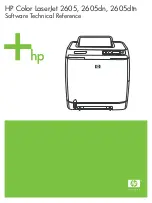
CHAPTER 21. LIVE AUDIO EFFECT REFERENCE
319
Basic Multiband Compression
By using only the upper thresholds, Multiband Dynamics can be used as a traditional down-
ward compressor. Adjust the crossover points to suit your audio material, then apply down-
ward compression (by dragging down in the upper blocks in the display or by setting the
numerical ratios to values greater than 1.)
De-essing
To remove harshness caused by overly loud high frequency content, try enabling only the
upper band and setting its crossover frequency to around 5 kHz. Then gradually adjust the
threshold and ratio to apply subtle downward compression. It may help to solo the band to
more easily hear the results of your adjustments. Generally, de-essing works best with fairly
fast attack and release times.
Uncompression
Mastering engineers are often asked to perform miracles, like adding punch and energy to a
mix that has already been heavily compressed, and thus has almost no remaining transients.
Most of the time, these mixes have also been heavily maximized, meaning that they also
have no remaining headroom. Luckily, upward expansion can sometimes help add life back
to such overly squashed material. To do this:
Turn down the Input knob to provide some additional headroom.
Adjust the Above thresholds for the bands so that they're below the highest peaks.
Add a small amount of upward expansion to each band. Be careful - excessive upward
expansion can make transients
very
loud.
Carefully adjust the attack and release times for each band. Note that, unlike in typical
downward compression, very fast attack times will
increase
the impact of transients,
while slower times result in a more muf ed sound.
Note:
Adding a maximizer or limiter to boost gain after you've returned some peaks to your
material may simply destroy them again.
















































